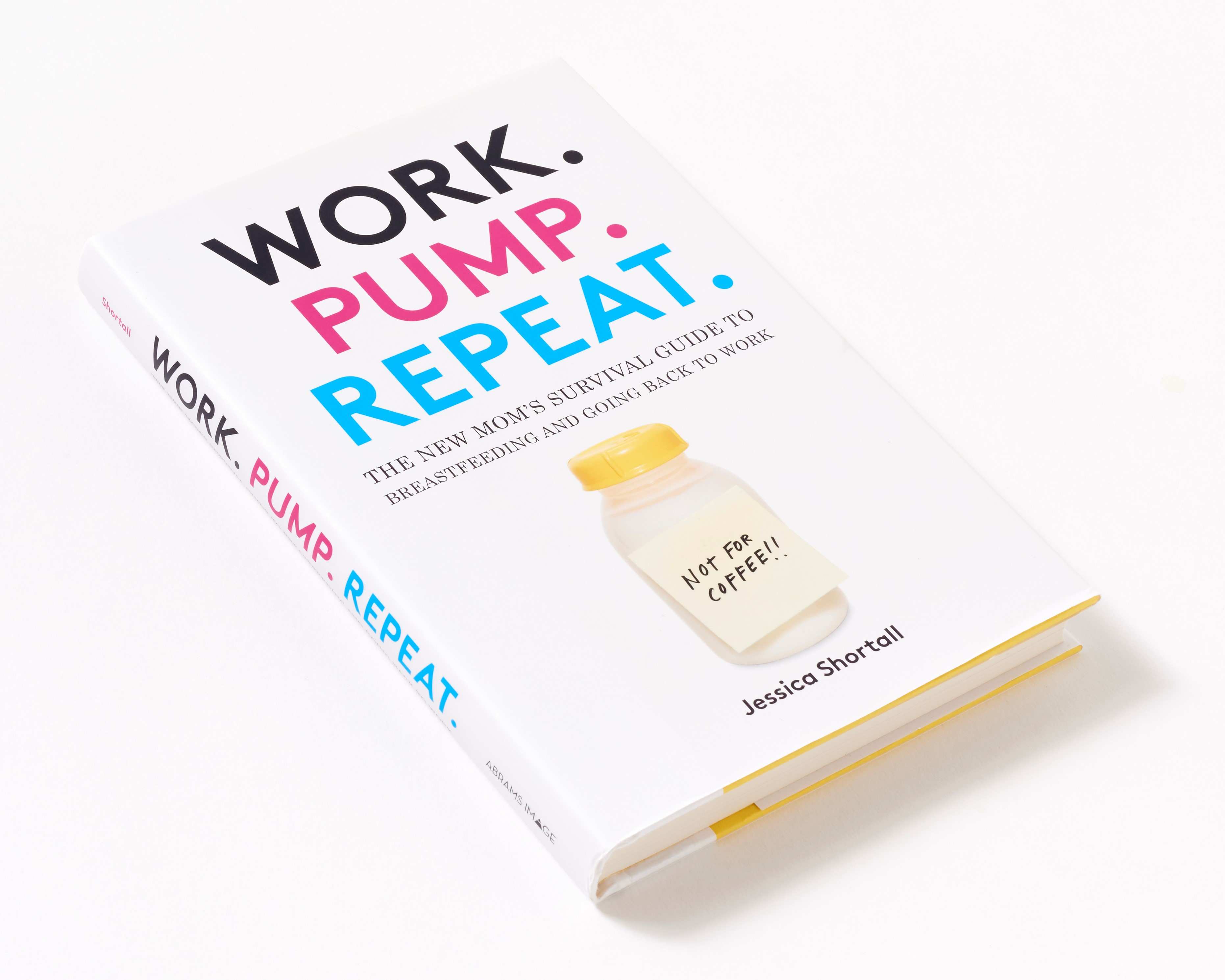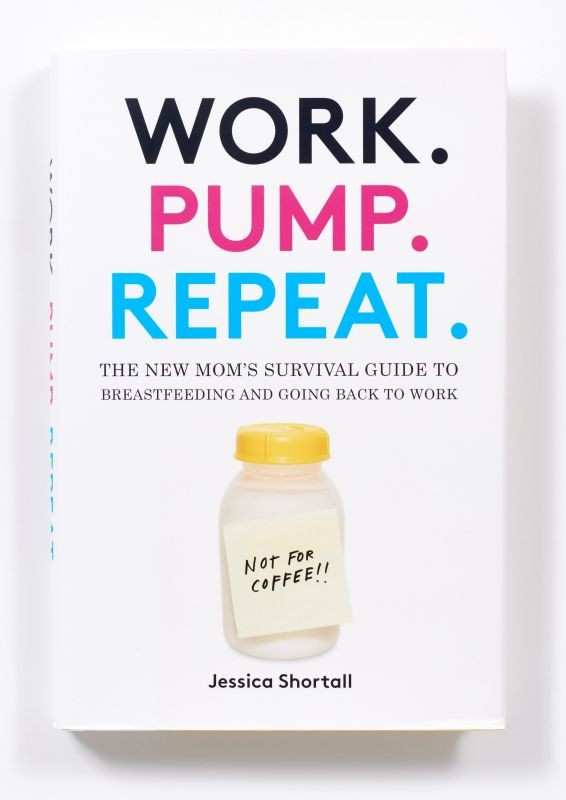By Jessica Shortall, author of Work. Pump. Repeat: The New Mom’s Survival Guide to Breastfeeding and Going Back to Work
I hear it all the time, on Facebook breastfeeding support groups and from working mom friends: “Your employer is  legally required to allow you to pump at work.” And I always think to myself, “Great. Time to open up the can of worms.” Because while I hope that things will continue to change for the better, your legal right to pump breastmilk at work is far from simple. In fact, some working mothers in America have no legal right to do so. In the crazy world of bringing your baby’s food source to work with you, informed is best, so let me bust some of the most prevalent myths:
legally required to allow you to pump at work.” And I always think to myself, “Great. Time to open up the can of worms.” Because while I hope that things will continue to change for the better, your legal right to pump breastmilk at work is far from simple. In fact, some working mothers in America have no legal right to do so. In the crazy world of bringing your baby’s food source to work with you, informed is best, so let me bust some of the most prevalent myths:
Myth #1: Federal law gives ALL working mothers the right to pump breastmilk at work.
False. Federal law only affords the right to pump at work to federal employees and wage earners.
The Affordable Care Act (aka “Obamacare”) affords some breastfeeding, working mothers the right to pump at work. The relevant language is in something called the Fair Labor Standards Act (FLSA), and it’s called “Break Time for Nursing Mothers.” Only two types of employee are covered: federal employees, and employees who are classified as “non-exempt.” The former is pretty self-explanatory. “Non-exempt” basically means that your employer has to pay you at least minimum wage, and has to pay you overtime if you work more than 40 hours a week. In short: you earn a wage rather than a salary.
Myth #2: Small businesses are exempt from complying with the federal law on pumping at work.
False. I hear this one all the time: “Employers with less than 50 employees are exempt.” No. Don’t let them claim this myth! Employers with fewer than 50 employees have to prove “undue hardship” to get out of the FLSA break time requirement. The onus is on the employer to prove that their “size, financial resources, nature, (or) structure of the employer’s business” makes it impossible to allow its working mothers to pump on the job. Until they can prove this, they have to allow their employees to pump.
Myth #3: Federal law requires employers to pay breastfeeding employees for time spent pumping.
False. FLSA does not require employers to compensate workers for pumping breaks. However, if your employer already pays for your breaks, and you choose to use those paid breaks to pump, they have to keep paying you. And take note: if you are not “completely relieved from duty” while you are pumping, it doesn’t count as a break, and they have to keep paying you.
Myth #4: There are laws in every state affording working mothers the right to pump at work.
False. And this is an important one, because if you’re a salaried, non-federal-employee worker, you aren’t covered under federal law (see Myth #1), so you need to find out your relevant state laws. As of this writing, 49 states and the District of Columbia have laws protecting women’s right to breastfeed in public and on private property. Only 27 states (and DC and Puerto Rico) have any laws related to breastfeeding and the workplace – but some of these laws are symbolic only. You can find a great, comprehensive list of state laws here. Check your state to see if you’re protected, and to what extent.
 Half-Myth #5: Your employer can’t make you pump in a bathroom.
Half-Myth #5: Your employer can’t make you pump in a bathroom.
This one gets a “partly false” rating. If you are covered under federal law (see Myth #1), this is true: your employer must provide you with “a place, other than a bathroom, that is shielded from view and free from intrusion from coworkers and the public, which may be used by an employee to express breast milk.” But if you’re not covered by federal law, state laws vary widely on the provisions they require for pumping at work. Places like DC, Hawaii, Maine, Minnesota, and New Mexico specify that employers must provide a place to pump that is not a bathroom. Arkansas, Colorado, Georgia, Illinois, Indiana, Montana, Tennessee, and Vermont only specify that it not be a “toilet stall” or “bathroom stall,” so presumably a bathroom area outside the actual stall is acceptable. Some states and territories, like California, Connecticut, Mississippi, and Puerto Rico, don’t say anything at all about bathrooms. Check out your state here.
Half-Myth #6: It’s easy to file a complaint against an employer.
This one gets a “partly false,” too. If your employer is not adhering to federal law, you can file an anonymous complaint with the Department of Labor – but of course, if you’re the only breastfeeding woman in your workplace, that anonymity kind of goes out the window. The federal also has a prohibition against retaliation for filing a complaint – you can contact a DOL Wage & Hour Division local office for help. If your employer is violating a state law, start with your state labor office for help in figuring out how to file a complaint.
Now that you’re an expert in legislation related to pumping at work, I’ve got one more job for you – go figure out whether your employer has any related policies. Even if you’re not covered by federal or state law, your employer (especially if it’s a bigger company) might have policies that afford employees the right to pump on the job. Ask Human Resources, or if that’s too awkward, ask for the entire employee handbook and search it yourself. You can also ask other new-ish moms in your workplace to see what they know.
Now get out there, attach a machine to one of the most sensitive parts of your body, and make the magic happen. And remember: even if you’re not protected by any laws or policies, you can sometimes go guerrilla and make it happen anyway. Pump in your car. Bring a hand pump and get mini sessions in here and there. But if it doesn’t work out for you, this is NOT your failure – it’s the failure of the system. Your worth as a mother is not measured in ounces, and you are still really, seriously awesome.


